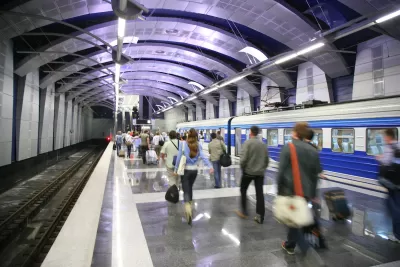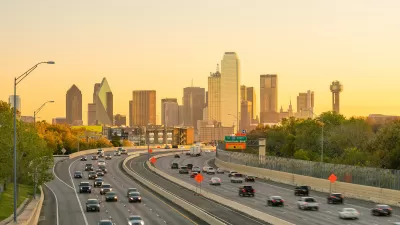Robust, efficient transit networks can have an outsized impact on vehicle miles traveled, even by non-transit users.

A new study from the University of Utah and MIT highlights the positive impacts of effective transit systems on land use and travel behavior across the larger population, not just transit users.
In fact, the indirect impacts of increased public transit and pedestrian infrastructure can be greater than the direct impacts. “For every mile not driven by transit riders, transit accounts for another six to nine miles not driven among the larger population.”
According to an article by Chris McCahill in State Smart Transportation Initiative, “The study looked at how factors like transit access, household makeup and income, and fuel prices influence transit use and vehicle miles of travel (VMT).” The study reveals how the ripple effects of transit can have positive impacts far beyond its users by creating a built environment more friendly to multimodal transportation.
FULL STORY: The benefits of transit extend well beyond transit riders

Study: Maui’s Plan to Convert Vacation Rentals to Long-Term Housing Could Cause Nearly $1 Billion Economic Loss
The plan would reduce visitor accommodation by 25,% resulting in 1,900 jobs lost.

Alabama: Trump Terminates Settlements for Black Communities Harmed By Raw Sewage
Trump deemed the landmark civil rights agreement “illegal DEI and environmental justice policy.”

North Texas Transit Leaders Tout Benefits of TOD for Growing Region
At a summit focused on transit-oriented development, policymakers discussed how North Texas’ expanded light rail system can serve as a tool for economic growth.

Paris Bike Boom Leads to Steep Drop in Air Pollution
The French city’s air quality has improved dramatically in the past 20 years, coinciding with a growth in cycling.

Why Housing Costs More to Build in California Than in Texas
Hard costs like labor and materials combined with ‘soft’ costs such as permitting make building in the San Francisco Bay Area almost three times as costly as in Texas cities.

San Diego County Sees a Rise in Urban Coyotes
San Diego County experiences a rise in urban coyotes, as sightings become prevalent throughout its urban neighbourhoods and surrounding areas.
Urban Design for Planners 1: Software Tools
This six-course series explores essential urban design concepts using open source software and equips planners with the tools they need to participate fully in the urban design process.
Planning for Universal Design
Learn the tools for implementing Universal Design in planning regulations.
Smith Gee Studio
Alamo Area Metropolitan Planning Organization
City of Santa Clarita
Institute for Housing and Urban Development Studies (IHS)
City of Grandview
Harvard GSD Executive Education
Toledo-Lucas County Plan Commissions
Salt Lake City
NYU Wagner Graduate School of Public Service





























